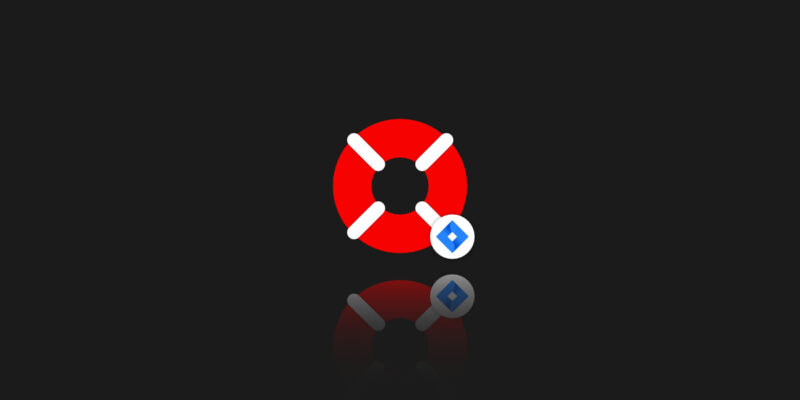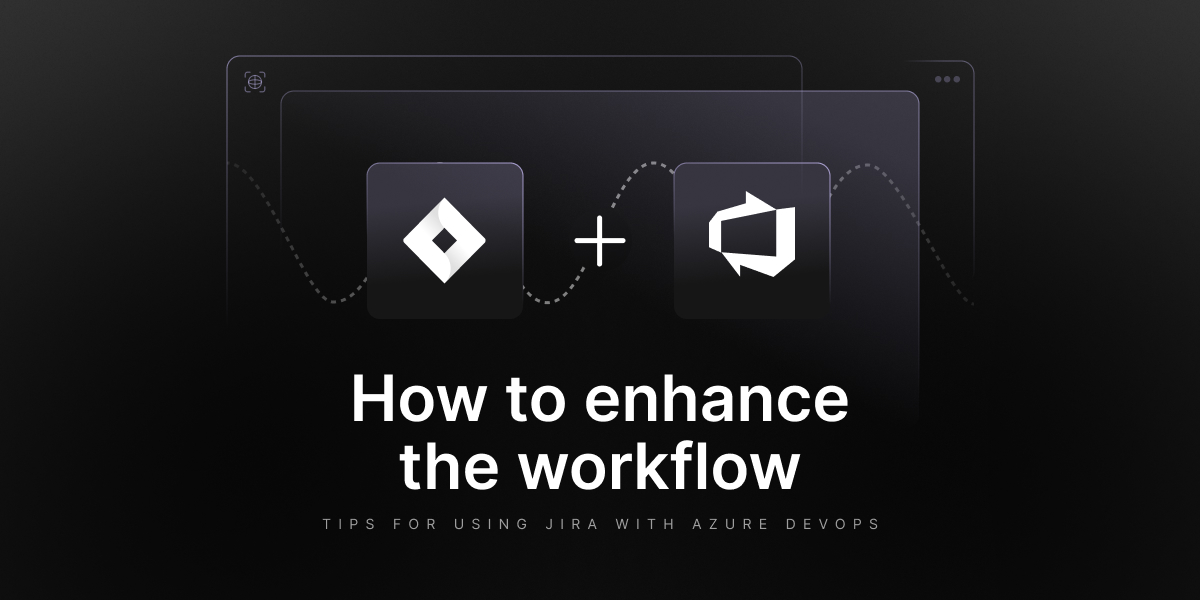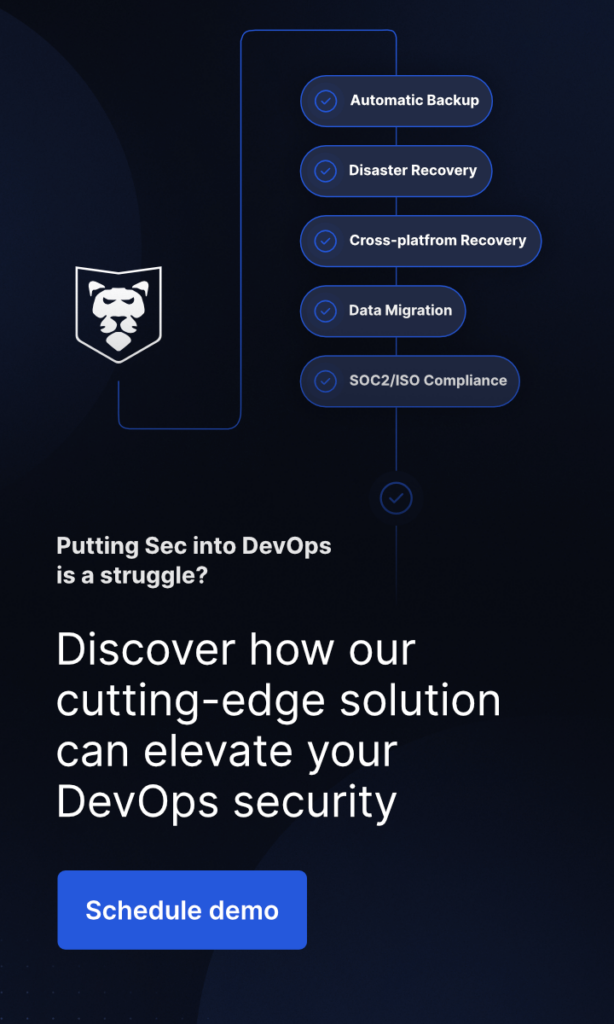
Jira Restore And Disaster Recovery: Scenarios & Use Cases To Build Your DR Strategy
It’s hard to imagine the company managing its projects without issue-tracking tools, like Jira. Actually, Jira is one of the most popular project management software solutions for organized teams. According to Atlassian, over 180k customers in about 190 countries use Jira in their daily work.
So, what will they do if suddenly their Jira account fails to work? Every agile team, project management, product management, as well as software development team leader and member, should consider a situation like that and have a plan to overcome any event of a disaster with minimal impact. In this article, we will go through threats that the business can face. Also, we will discuss the best Disaster Recovery scenarios and use cases to guarantee your team’s continuous workflow and data recoverability. As business continuity should be the primary goal of any organization.
Potential threats to your Jira data
Last year’s Atlassian incidents and the biggest Jira failure in history proved to us that interruptions in availability and the risk of data loss in SaaS services should be taken seriously. Accidental or intentional human errors, Atlassian infrastructure outage, your own Jira infrastructure downtime, unauthorized access, threat actors’ activity, ransomware, and natural disasters – all of those can potentially threaten your Jira environment.
Is it possible to overcome all those situations with a minimal impact or even without it at all? Yeap… Here we come to the key steps of building your Jira Disaster Recovery Strategy.
Jira Disaster Recovery strategy as part of your business continuity guarantee
Backup is a guarantee that your data will be recovered from any point in time and accessible in any potential threat scenario. Though to deal with disaster situations, you should build security, collaboration, and communication right. Here is a checklist of activities you need to keep in mind when building your Disaster recovery strategy:
Now let’s go through those components to have a better understanding of what they imply.
Component # 1: Sensitive data identification
The first thing you should do to build your strategy is to identify which Jira data is the most crucial for your business continuity. So to say, you need to figure out without which data your company could experience prolonged downtime, and, thus, needs more careful security measures and better protection, which includes:
- more frequent backups of vital data,
- access control (who can access the original copy and who can access its backups).
Component # 2: Allocation of employee roles
When everything is clear to your team, it’s much easier to overcome a disaster. That’s why it’s important to state and include in your Disaster recovery plan the names, contact details, and responsibilities of those employees who will need to deal with the consequences of a disaster and recovery processes. They need to get thorough instructions and know well who is responsible for such activities as who:
- declares about the catastrophe,
- reports to the management,
- liaises with the press and customers,
- manages the disaster,
- performs recovery procedures.
Component # 3: Set of actions for Disaster Recovery
When everybody on your team knows their responsibilities, they need a detailed description of their actions in case of a disaster. That’s why it’s highly important to establish and document the sequence of actions to reduce and minimize the impact of an event of failure.
Everybody knows that the first few hours after a disaster strikes are the most critical. So, the team is required to react fast and take effective decisions to recover all the business and IT operations to its normal state as fast as possible. Hence, make sure that your company has outlined all the steps critical to follow when the disaster hits. It should include emergency communication protocols, data backup and recovery, and activation of the contingency plans.
Component # 4: Disaster Recovery communication plan
Stakeholders, management, employees, the media, customers, and other compliance authorities should be notified right after the disaster strikes. How and what is the most appropriate way to do it? All of that should be written in your communication plan for Disaster Recovery. To be precise, it should include message templates to make the communication fast and clear, the most appropriate communication channels to reach your target group on time, and the list of employees whose responsibility will be to coordinate and disseminate information during the catastrophe. It will help you to preserve your shareholders and customers’ loyalty, as they will see that you take care of their data to be recovered fast, are clear in communication, and have nothing to hide.
Also, make sure to continuously evaluate and update your communication plan on the basis of feedback you get from your customers, or experience you have during previous disaster events if they have already taken place.
Component # 5: Set RTO and RPO
Recovery Time Objective (RTO) and Recovery Point Objective (RPO) are probably the most important metrics you need to take into account building your Disaster Recovery Strategy. Let’s consider these metrics in more detail.
Recovery Time Objective
RTO determines how much time your company can possibly experience downtime after a disaster hits. So to say, this metric helps to set a target time when all the processes in the company should be fully recovered to a normal state. If you decide to set your RTO to 10 hours, it means that you estimate your company’s critical data will be fully recovered within those hours.
It’s highly important to find a balance between cost efficiency and the processes that help you get ready for a disaster. Though, you should keep in mind that low RTO means that your organization is better prepared for an event of failure and has a developed Disaster Recovery strategy, which helps you to restore your critical data fast (in this case you have a backup plan and can recover your data fast eliminating downtime and spending much fewer funds on the consequences). However, when you set your RTO high (which may seem cheaper at the first sight as you don’t spend on a backup solution, maybe create your own backups), you might spend much more time and money to recover your data, as you can experience longer downtime, and spend more on the consequences of the event of failure.
Recovery Point Objective
RPO, unlike RTO, determines the period of time between when your backups are done and the amount of data your organization may possibly lose between those backup copies. Before measuring this metric, you need to identify all sources of your critical data and make an analysis of how much data you can lose to continue working uninterruptedly. If your organization can easily put up without data produced during the latest 10 hours, then your RPO is 10 hours. Such an RTO permits the company to back up its data once a day. On the other hand, if the company sets its RTO to 10 minutes, it means that the organization can’t operate without its critical data for longer than 10 minutes. Thus, the company needs frequent backups for its critical data and replication between storages to guarantee its business continuity.
Component # 6: Check RTO and RPO regularly
You should be critical when you set your RTO. Moreover, you need to have a rigorous examination of your entire system to understand that RTO meets your requirements. So, you can’t just pick up some number and put it into your SLA – you need to weigh it and check it on a regular basis.
Reviewing your backup configuration and Disaster Recovery plan on a regular basis will help you to check RPO and RTO metrics effectively. If you want to optimize them, then it is a must for you to have a full impact on the frequency of backup, the use of replication, the possibility to make incremental backups, and have a granular recovery to guarantee instant access to your critical data. It should become your Security Team’s routine to assess the backup and recovery process and review backup logs and reports. Thus, you will be able to improve your RPO and RTO metrics appropriately and on time.
Backup as a data loss prevention measure
It’s not a secret that an adequate backup plan is a fundamental part of Disaster Recovery for your Jira Cloud data.
Well, let’s look at what the ideal Jira backup plan should include making your data recovery process fast and smooth. Your Jira backup should definitely:
- provide with full data coverage, including boards, projects, issues, Jira Assets, Jira Automation Rules, etc.
- allow you to have unlimited retention – it will permit you to recover your data from any point in time
- include the 3-2-1 backup rule, permitting you to store your Jira backup copies on many independent storage instances – cloud or local
- permit to apply Grandfather-Father-Son (GFS) rotation scheme to allow you to perform backup faster with better storage capacity at the same time
- encrypt your data in-flight and at rest with your encryption key
- turn on ransomware protection, including WORM-compliant storage
We can enlarge this list with many other features, yet our topic is recovery. That is why we mentioned only those that can make your Jira Disaster Recovery and restore possible and adequate.
Jira down? Get your team back to tasks within minutes with the first professional backup for Jira Cloud, Jira Service Management, and Jira Work Management.
Jira restore – the best options
Your team’s business continuity depends on how fast you can respond to any event of a catastrophe. We have already mentioned that backups are a key issue to any data protection and business continuity planning, and are critical to your Jira Disaster Recovery strategy.
So, before we dive deep into the Disaster Recovery scenarios and use cases to keep your business up and running, let’s first look at some Jira restore definitions that your organization should have. They are the following:
Point-in-time restore
One of the most common reasons for cybersecurity risks and data losses is human mistakes. It can happen due to different purposes: intentional, or unintentional, like tiredness, inattentiveness, etc. What is most important here is the possibility to recover your Jira data from the moment before this error occurred.
Usually, Atlassian provides 120 days of retention – after this time all deleted (intentionally or by mistake) data will be gone forever. What if you find it out after 6 months? Thus, you need a point-in-time restore and Jira backup software with unlimited retention.
Granular restore
What will you do if you accidentally deleted your issues, projects, or any other of Jira objects? Restoring your entire Jira instance will take some time. So, to speed up the process you can use the granular restore option that permits you to recover your data in a flash without even interrupting your business processes.
All you need to do is to pick up any of the projects, issues, attachments, or workflows with all their dependant elements and restore them to the place of your choice: the same Jira account, a new one, or locally to your device. Thus, your business continuity is steady and all your Jira data is accessible at the place you need it.
Curious to learn more about GitProtect.io granular restore? Don’t miss our Jira Granular Restore to eliminate Ooops-moment video (Psst, don’t forget to subscribe!)
No-user recovery option
According to the Jira billing model, you are supposed to pay for every user who uses the application. Thus, in theory, if you need to restore the entire Jira project management environment, you have to pay twice of what you currently pay. Why? Because you need to have 2 times more users.
However, with GitProtect.io no-user recovery option you can restore your entire Jira data except users without overcoming the Jira pricing plan you have. Another pleasure is that you can restore your data to a free Jira account. What is good – is that there are no extra costs.
Jira Disaster Recovery – Scenarios and Use Cases
Disaster Recovery is the process of restoring IT systems and your data after an event of a disaster. When you choose your Jira backup and Disaster Recovery software you should check how ready the software is for any possible data loss scenario. You shouldn’t forget to include the Recovery Time Objective and the Recovery Point Objective during your Disaster Recovery planning.
The majority of backup vendors offer support only when Atlassian experiences an outage. Unfortunately, we have already mentioned that there are many more situations when Disaster Recovery may be urgent for your business continuity. So, which scenarios should your Disaster Recovery plan be able to respond to?
Scenario # 1 – Atlassian infrastructure is down
In April 2022 there was a massive Atlassian outage when more than 700 Jira users couldn’t access their data for 2 weeks. Was it a hard time for those influenced Jira users? Surely… yes. Was it possible for them to minimize that downtime? Surely… yes.
For example, in this scenario, GitProtect.io permits to restore of the Jira production environment fast. For example, you can instantly restore your Jira account from the latest copy or some chosen point in time to your local machine, the same, or another Jira account, even a free one.
Scenario # 2 – Your IT infrastructure is down
Here let’s remember the golden backup standard – the 3-2-1 backup rule, under which you have at least 3 backup copies on at least 2 storage instances, one of which should definitely be outside your infrastructure.
In the ideal world, to ensure that the business you have can recover instantly and keep operating, your backup and Disaster Recovery software should permit you to add as many storage instances as your company’s policy requires. As it is your guarantee to recover your Jira project management environment instantly and easily.
Moreover, your backup and Disaster Recovery solution should allow you to replicate all your Jira backups between the storages, no matter what storage you use – on-premise, cloud, hybrid, or multi-cloud. To sum up, if you don’t want to lose your Jira data, you should ensure that your data is available from one storage instance and from absolutely another location as well.
GitProtect.io has an advantage as it provides its customers with free cloud storage when you need a reliable second backup instance. So, in the event of your first backup storage being down, you can be sure to restore your entire Jira environment or only the chosen data from any point in time from your other storage device.
Scenario # 3 – Backup vendor infrastructure is down – what to do?
Every backup provider must be prepared for its infrastructure outage and other events of failure. Luckily, no businesses are more aware of this than those operating in the cybersecurity market. Anyway, while choosing Jira Cloud backup software, make sure your backup vendor has a “backup plan” itself.
Takeaway
Your project development process is a mechanism where every piece of information matters. Within the growth of your project, your Jira account is constantly updated and stores an incredible amount of critical data. Does it need proper protection? No doubt, yes! Even Atlassian, as a service provider, recommends its customers have a backup plan for Jira critical data.
Moreover, while building your business continuity plan, it’s important to perform a backup and Disaster Recovery testing from time to time to be sure that your Disaster Recovery plan is effective, and guarantees your Jira data high availability under any disaster scenario with minimal downtime and recovery time.
If you want to ensure the most efficient Jira Disaster Recovery plan, you shouldn’t miss out on our Jira Backup Best Practices blog post, where we explained in more detail what an effective Jira backup should look like. Don’t forget that according to the Atlassian Shared Responsibility Model backup of your Jira environment is your obligation.







